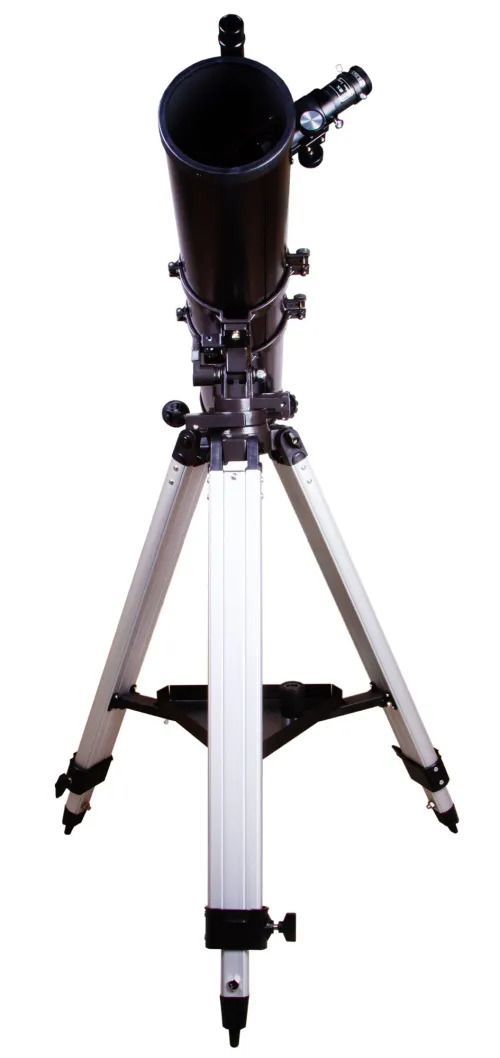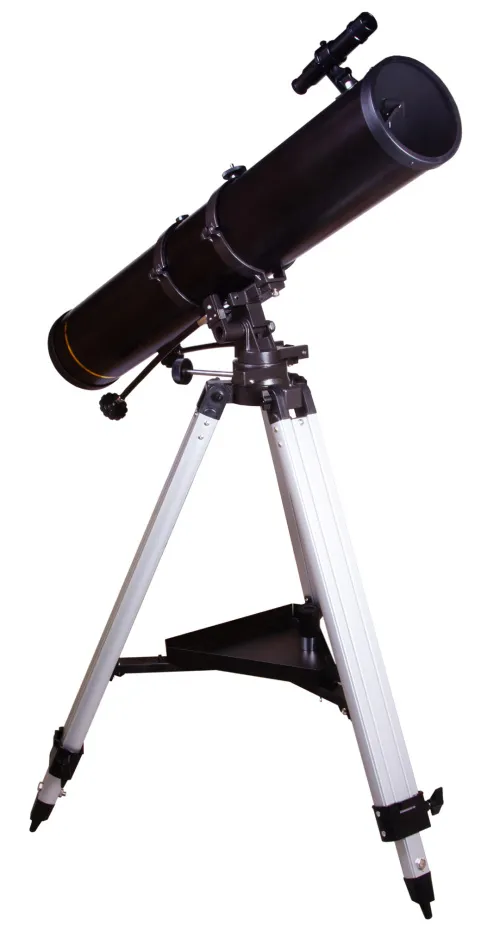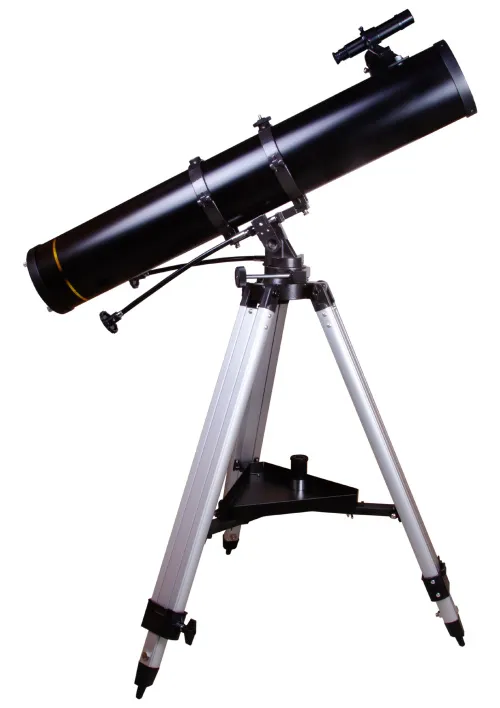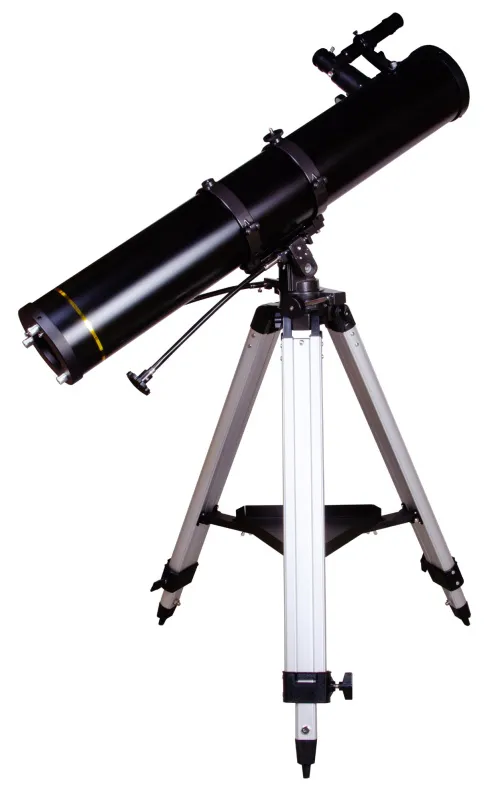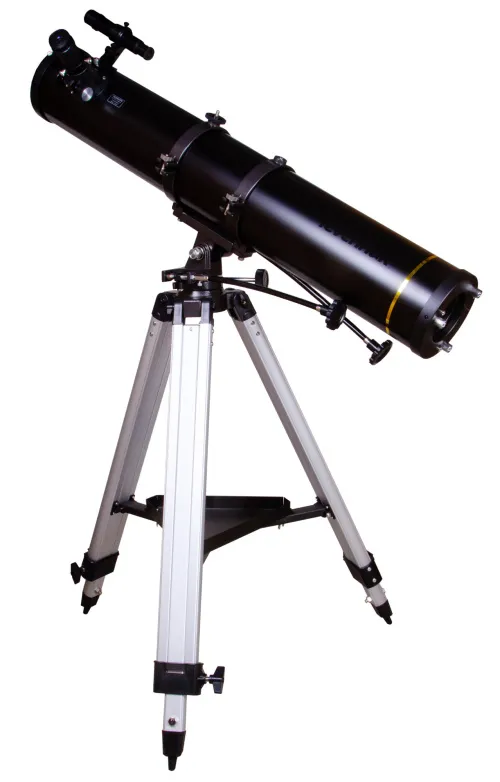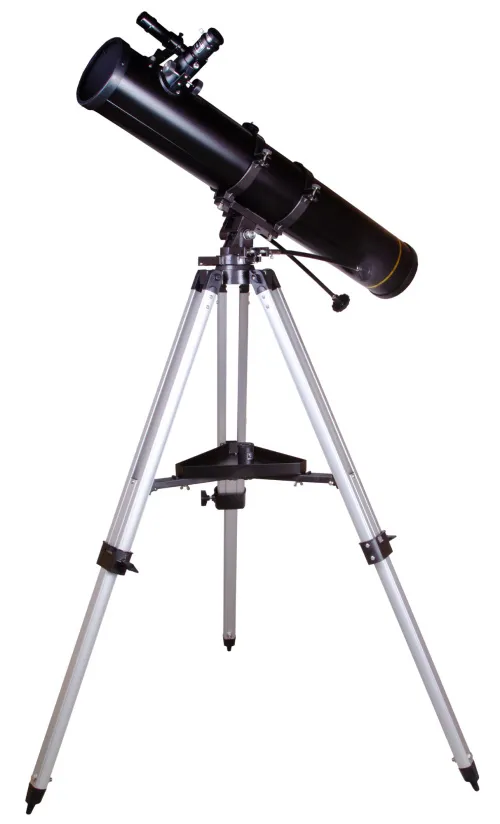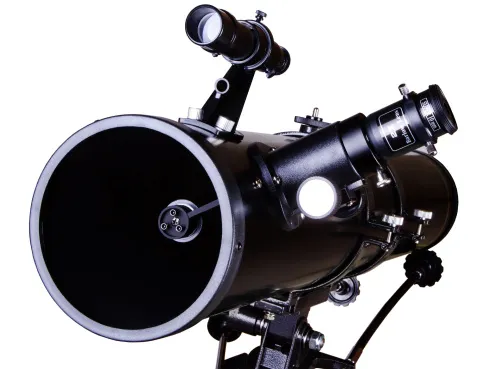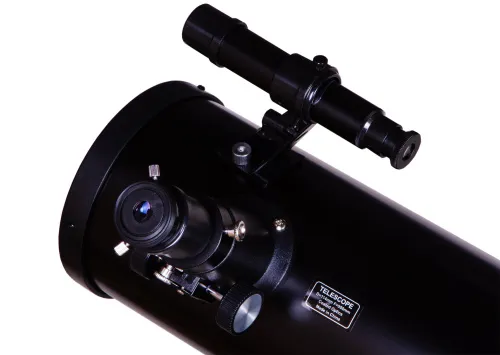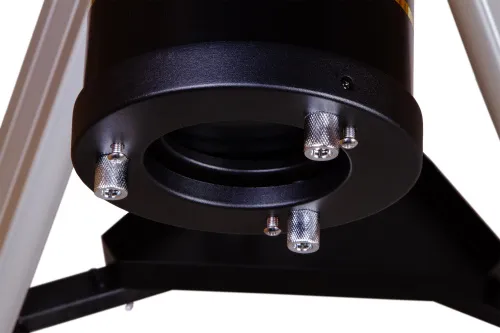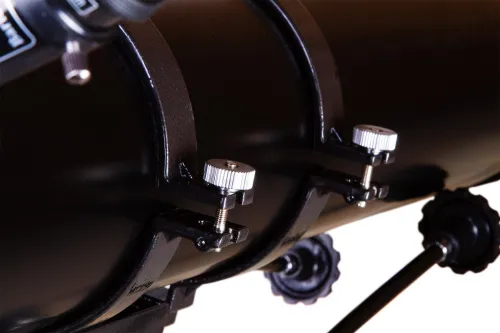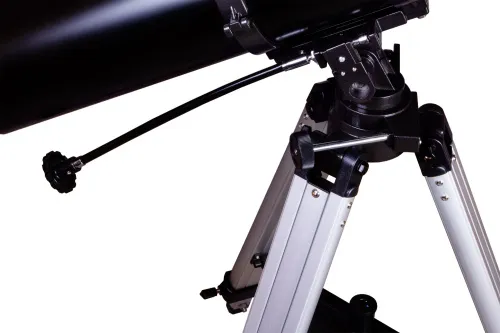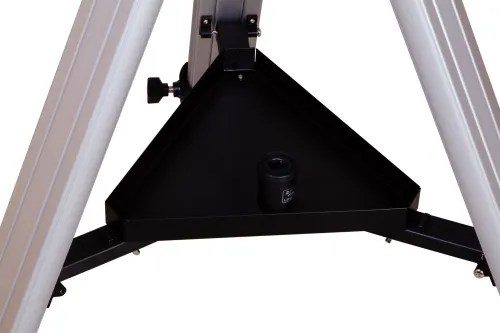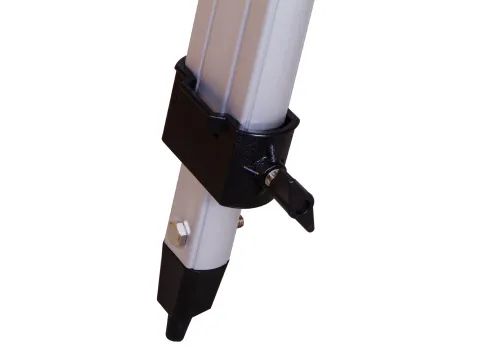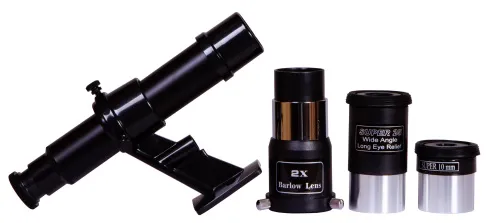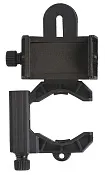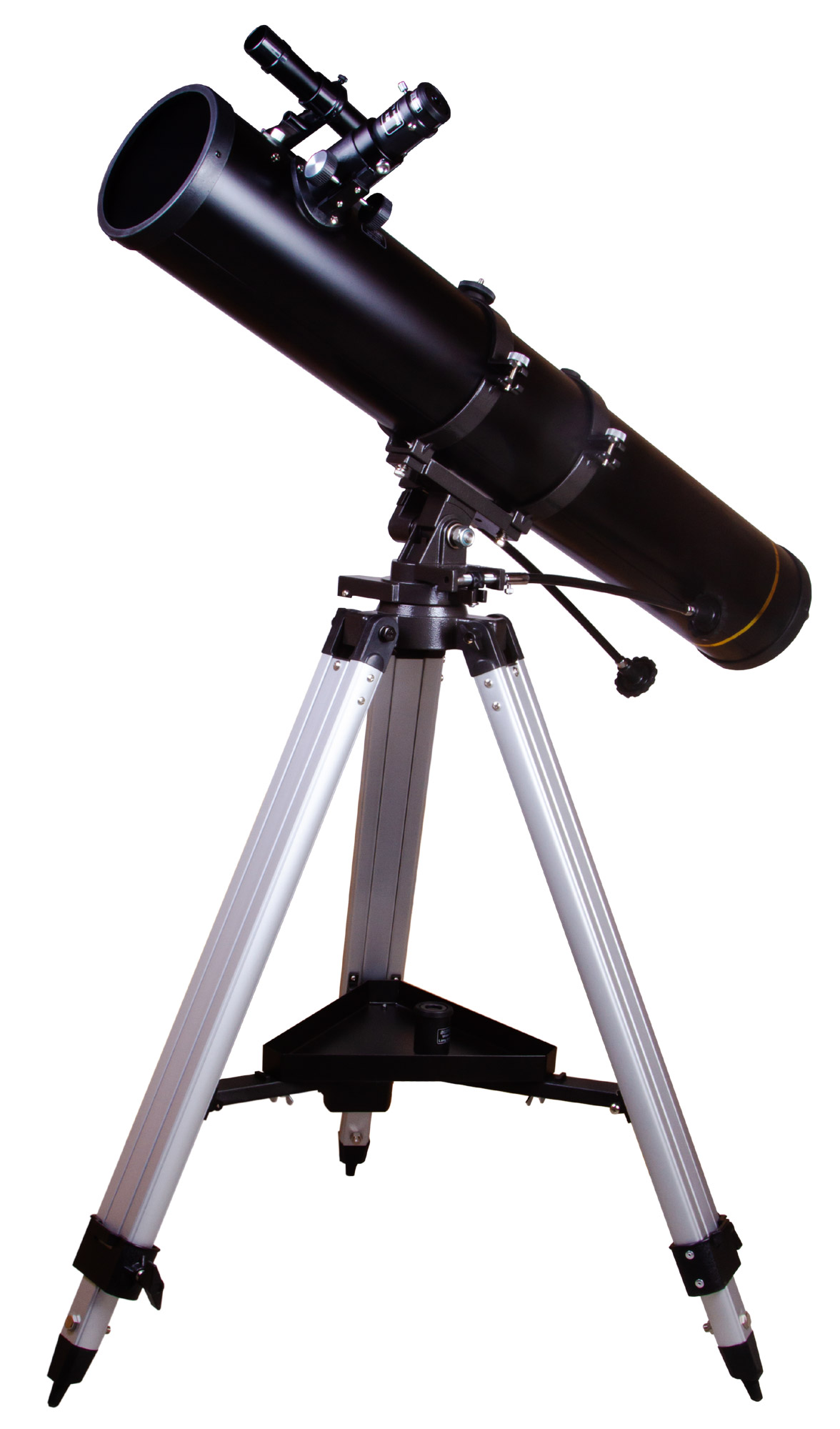Levenhuk Skyline BASE 110S Telescope
Newtonian reflector. Aperture: 114mm. Focal length: 900mm
| Product ID | 73800 |
| Brand | Levenhuk, Inc., USA |
| Warranty | lifetime |
| EAN | 5905555002330 |
| Package size (LxWxH) | 101x43x23 cm |
| Shipping Weight | 10.53 kg |
The Levenhuk Skyline BASE 110S Telescope is a Newtonian reflector with an extensive kit. Accessories in the kit are chosen in such a way as to discover all of the capabilities of the optics. This telescope allows for observing lunar craters up to 5km in diameter, the rings of Saturn, phases of Mercury, and even the atmospheric phenomena on Jupiter. The optics are excellent for observing double stars, globular clusters as well as diffuse and planetary nebulae. Levenhuk Skyline BASE 110S is a great choice for exploring deep and outer space.
This telescope comes with an alt-azimuth mount. It only takes one turn of an optical tube in order to point it at an object. Due to its simple operation, Levenhuk Skyline BASE 110S is a great choice for customers who are taking their first steps in exploring space and are looking for an easy-to-operate telescope. The mount is attached to an aluminum tripod; the tripod legs feature adjustable height. There is also an accessory tray.
One of the main features of this model is a balanced accessory kit. Two eyepieces with various focal length and a Barlow lens allow for obtaining optimal magnifications, which are suitable for studying various space objects. It is recommended to observe extended deep-sky objects at low magnification and to examine planets at high magnification. An optical finderscope with 6x magnification is included in order to simplify pointing an optical tube at an object.
Features:
- Newtonian reflector with a spherical primary mirror
- Simple-to-operate alt-azimuth mount
- Works great for observing deep-sky objects: star clusters, galaxies, double stars
- A good choice for observing the planets of the solar system
- Suitable for entry-level astronomy enthusiasts
The kit includes:
- Telescope optical tube
- Alt-azimuth mount
- Aluminum tripod with an accessory tray
- 6x24 optical finderscope
- SUPER 10mm eyepiece
- SUPER 25mm eyepiece
- 2x Barlow lens
- User manual and lifetime warranty
| Product ID | 73800 |
| Brand | Levenhuk, Inc., USA |
| Warranty | lifetime |
| EAN | 5905555002330 |
| Package size (LxWxH) | 101x43x23 cm |
| Shipping Weight | 10.53 kg |
| Optical design | reflector |
| Optical scheme | Newtonian |
| Optics material | optical glass |
| Optics coating | standard |
| Primary mirror diameter (aperture), mm | 114 |
| Lens (mirror) shape | concave sphere |
| Focal length, mm | 900 |
| Highest practical power, x | 228 |
| Aperture ratio | f/8 |
| Resolution threshold, arcseconds | 1.05 |
| Limiting stellar magnitude | 12.4 |
| Eyepieces | SUPER 10mm (90x), SUPER 25mm (36x) |
| Eyepiece barrel diameter, in | 1.25 |
| Barlow lens | 2x |
| Finderscope | optical, 6x24 |
| Focuser | rack & pinion |
| Tripod | aluminum |
| Tripod height (adjustable), mm | 700–1250 |
| Accessory tray | ✓ |
| Telescope control | manual |
| Mount | alt-azimuth, AZ3 |
| Optical tube mounting mode | fastening rings |
| Optical tube material | metal |
| User level | beginners, experienced users |
| Assembly and installation difficulty level | easy |
| Observed object | deep-sky objects |
Convenient diagrams that describe how to install additional accessories on refractors and catadioptric telescopes
Find out how to assemble a telescope on an example of the Levenhuk Skyline 90x900 EQ telescope
This short guide will help you avoid typical mistakes and learn more about telescope and mounting types
The basics of astronomical observations for beginners
In this article we have gathered answers to some of the most frequently asked questions about telescopes
The most interesting celestial objects you can observe with Levenhuk telescopes
How telescopes work?
You can actually perform observations from your balcony!
All about telescope sizes, types, magnification, and mounts
Learn how to set up and use the telescope properly
Astronomy in light-polluted skies. Find out what you can observe in the city
Read an interesting comprehensive article on telescopes for little astronomers
The pictures are made with Levenhuk telescopes
Celestial objects you can observe with telescopes of different apertures
Colored and vivid images of galaxies, planets and star clusters entrance everyone who is fascinated by boundless space
Find an interesting review on the history of the changes to a refracting telescope
To make the process of choosing a telescope easier, we will tell you about the characteristics of the most popular types of telescopes today
Learn everything you need to know about refractor telescopes to make the right choice


